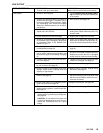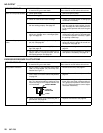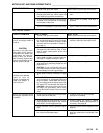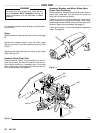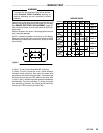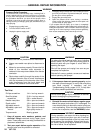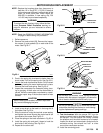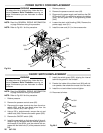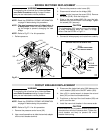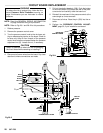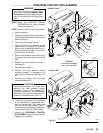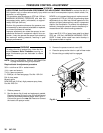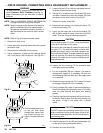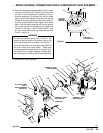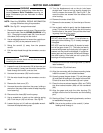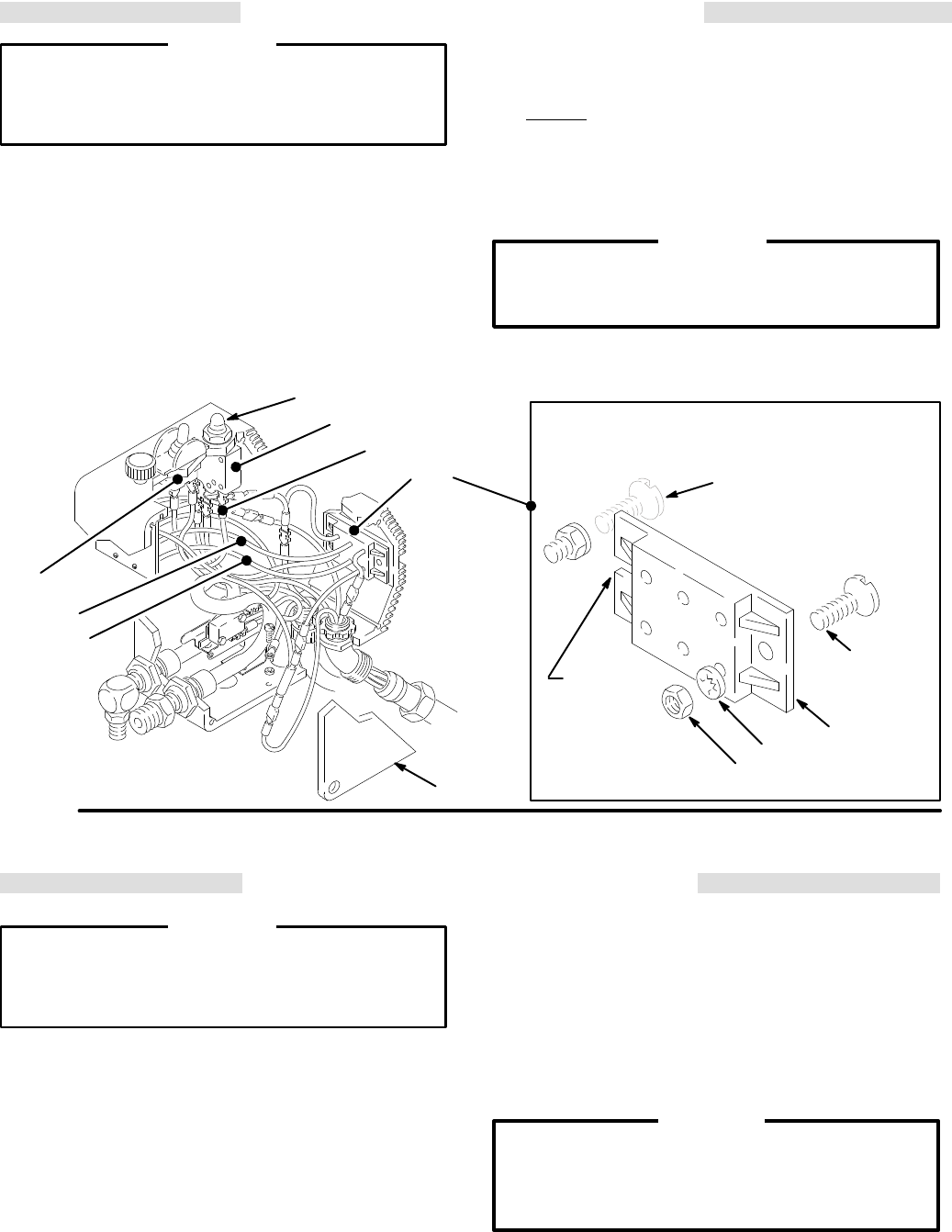
307–758 27
BRIDGE
RECTIFIER
REPLACEMENT
WARNING
To
reduce the risk of
serious injury
, follow the
Pres-
sure
Relief Procedure
warning on page 24 when
-
ever
you are instructed to relieve pressure.
NOTE: Read the GENERAL REPAIR INFORMATION
on
page 24 before doing this procedure.
NOTE:
The
most common cause of bridge failure is
a
faulty motor
.
Check the motor before replac
-
ing the bridge to prevent damaging the new
bridge.
NOTE: Refer
to Fig 27–1 for this procedure.
1.
Relieve pressure.
2.
Remove the pressure control cover (62).
3.
Disconnect all wires from the bridge (308).
4.
Loosen
but don’t remove the screw (331A). Remove
the
screw (331B). Slide the bridge out.
5.
Slide in the new bridge (308). Be sure the lock-
washers
(333)
are IN FRONT of the bridge. T
ighten
the
screws (331) securely
.
CAUTION
The
lockwashers (333) must be
in front of the bridge
to avoid overheating which will result in bridge
failure.
See the DET
AIL in Fig 27–1.
6.
Connect
all wires properly and route them carefully
.
332
333
308
331B
BRIDGE INST
ALLA
TION DET
AIL
Fig 27–1
SLOTTED
END
LOOSEN AND
REMOVE
LOOSEN THIS SCREW
BUT DO NOT REMOVE
01229
331A
303
310
309
308
306
01225
G1
G2
62
CIRCUIT BREAKER REPLACEMENT
WARNING
To
reduce the risk of
serious injury
, follow the
Pres-
sure
Relief Procedure
warning on page 24 when
-
ever
you are instructed to relieve pressure.
NOTE: Read the GENERAL REPAIR INFORMATION
on
page 24 before doing this procedure.
NOTE:
Refer to Fig 27–1 for this procedure.
1.
Remove the pressure control cover (62).
2. Use
a small screwdriver to slide the terminal adapter
off
the circuit breaker terminal.
3. Disconnect the single black wire (306) between the
circuit
breaker (309) to the ON/OFF switch (303).
4. Use a 5/8 in. socket wrench to loosen the nut and
boot
(310) on the circuit breaker button.
5. Push
down on the top of the circuit breaker (309) and
pull
it out of the box.
6.
Install the new circuit breaker in the reverse order
.
Do
not allow the circuit
breaker contacts to touch the
bourdon tube, which will cause a short. T
ighten the
circuit breaker nut firmly to prevent the circuit
breaker
from turning.
CAUTION



